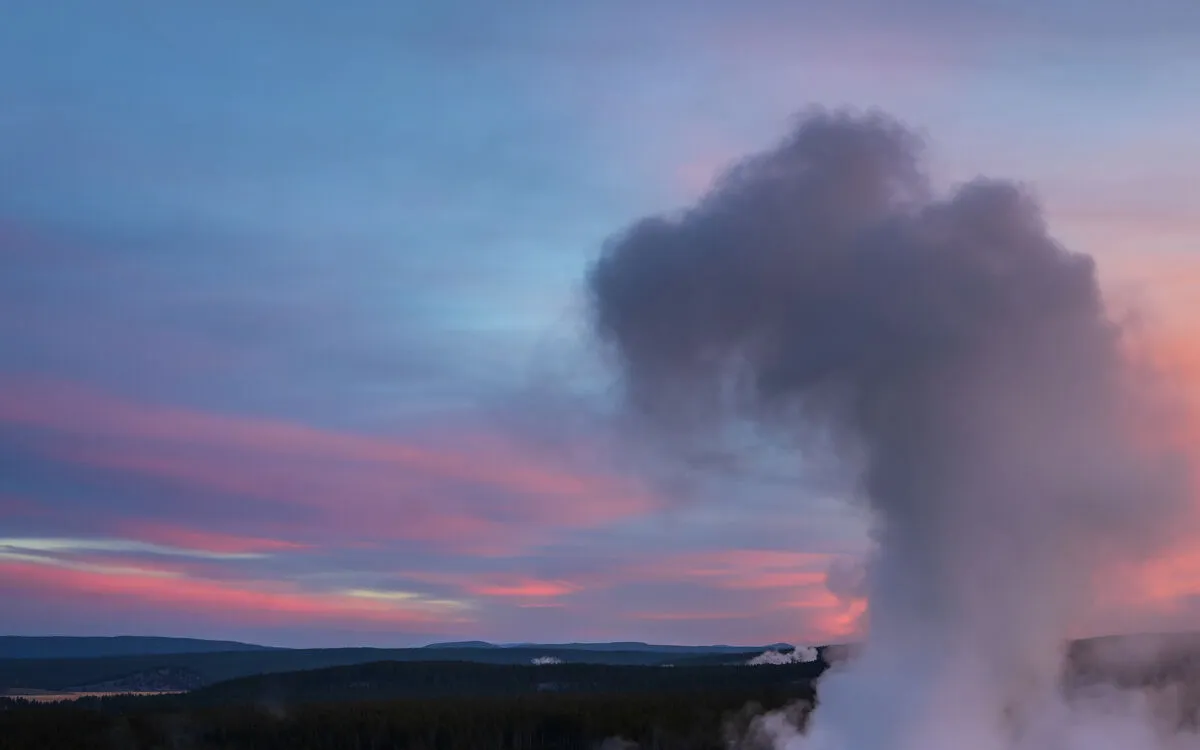
On a warm August day in 2024, a ranger from Yellowstone National Park was driving south between Mammoth Hot Springs and Norris Geyser Basin when they noticed an unusual plume of steam rising in the distance. Initially uncertain whether it was steam or smoke from a wildfire, the ranger quickly determined that it was, in fact, steam. This steam was emanating from a newly discovered thermal vent, as reported in a recent blog post by the U.S. Geological Survey’s Yellowstone Volcano Observatory.
The ranger promptly notified park geologists, who then embarked on a trek through a boggy marsh to investigate the source of the steam, located among a stand of lodgepole pine trees. Although the discovery is intriguing, Yellowstone National Park spokesperson Linda Veress declined to comment further or facilitate an interview with the geologists involved in verifying the new thermal feature.
Unbeknownst to passersby on the nearby road, the stand of trees is concealing a rhyolite lava flow, which is characterized by its thick, chunky formations that are common throughout the Yellowstone Caldera. The newly identified thermal feature originates from the base of this lava flow, adding to the park's rich geological tapestry.
Yellowstone sits atop one of the world’s largest magma reservoirs, boasting over 10,000 hydrothermal features, including geysers and hot springs. Geologists have meticulously mapped more than 100 major hydrothermal areas within the park, and this new hydrothermal feature is a testament to the continually evolving landscape of this unique national park.
Michael Poland, a geophysicist in charge of the Yellowstone Volcano Observatory, emphasized the dynamic nature of the area, stating, “This is really just Yellowstone being Yellowstone. This is exactly how this area has always behaved. It’s incredibly dynamic.” New thermal features are regularly formed in Yellowstone, but the emergence of a completely new hydrothermal area is relatively rare. Researchers often capture these phenomena using satellite imagery and aerial photography, which can reveal changes like forests giving way to bubbling ground and gas vents.
The recently identified thermal vent is situated in the Roadside Springs thermal area, an area known for its numerous hot springs near the Norris-Mammoth drive. When geologists examined the vent in 2024, they found that it was registering temperatures above 170 degrees Fahrenheit. The surrounding area was covered with a thin layer of gray clay, suggesting the feature is relatively young. The Yellowstone Volcano Observatory posits that this new hydrothermal feature may be linked to geological activities that began nearby in March 2003.
While it remains uncertain how the new vent will alter the surrounding landscape, thermal features are known to significantly affect vegetation. The hot, mineral-rich waters can damage trees and alter soil characteristics. Poland noted, “If this feature continues to be active, it wouldn’t be surprising if the trees around it turned brown and eventually fell over.”
Since its discovery, the new thermal feature has shown noticeable changes. It remained active throughout the fall, producing a steam plume that was particularly visible on chilly mornings. However, as the seasons changed, steam output decreased significantly. Hydrothermal features like this one can fluctuate in temperature, water output, and appearance based on seasonal variations in moisture and temperature.
Poland explained that the availability of groundwater influences these changes. Spring and summer bring ample rain and snowmelt, while fall and winter are typically drier, impacting how the hot water beneath the surface interacts with groundwater above.
As the summer of 2024 approaches, geologists plan to revisit the thermal vent to monitor its evolution. “It will be interesting to see how it evolves over the course of the seasons,” Poland said. The previous summer had been particularly eventful for hydrothermal activity in Yellowstone, with significant geological events capturing the attention of both researchers and visitors.
In May, a geologist working in the Norris Geyser Basin discovered a small new crater likely formed from a minor explosion in April. Additionally, a pool in Biscuit Basin erupted on July 23, sending hot water, rocks, and mud soaring into the air, with fragments reaching heights of 400 to 600 feet. This spectacular event, which occurred about 2 miles northwest of the famous Old Faithful geyser, damaged a boardwalk but, fortunately, resulted in no injuries.
As Yellowstone National Park continues to change and evolve, the discovery of new thermal vents and hydrothermal features adds to the allure and mystery of this breathtaking natural wonder. Visitors and geologists alike remain captivated by the ongoing geological processes that shape this remarkable landscape.